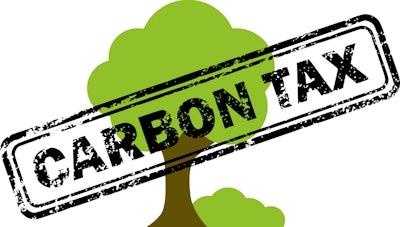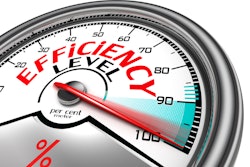
Denmark is mulling options for a tax on carbon dioxide emissions for agriculture. Not only is it set to increase costs for farmers, the tax is forecast to reduce agricultural production and the sector’s workforce, as it is ramping up political pressure.
Climate-neutral food production by 2050 is the aim for Danish agriculture, according to the Danish Agriculture and Food Council. It is an ambitious target, says the council, and it is unclear exactly how it will be achieved.
In response to a proposed carbon emission tax on the farming sector, two of the country’s leading agrifood companies have warned of the likely consequences of reduced production and the future closure of farms.
If the proposal comes into effect, Denmark would be the first country in the world to impose such a tax on farming, reported Reuters last week.
There is broad agreement that a carbon emissions tax would help Denmark achieve a 70% cut in greenhouse gas emissions (compared with the level in 1990). Legally binding, this is the nation’s target for 2030. Last year, New Zealand postponed the introduction of a similar tax until 2025. It was pushed back because it will mean higher costs for farmers, and an estimated 20% in the output of agricultural products.
For international dairy company Arla, new technologies are the preferred approach to reduce emissions. Such advances have resulted in a significant cut in emissions by the firm’s 9,000 farmers over the past two years, according to its CEO Peder Tuborgh.
A more sustainable transition identified by Europe’s leading pork producer Danish Crown is encouraging producers to follow the example of the most efficient farmers, according to Reuters. CEO Jais Valeur said this approach would help avoid a forecast 20% reduction in the output of the nation’s cattle and pig sectors.
Denmark considers 3 levels for carbon tax
For the Danes to reduce carbon dioxide (CO2) emissions for agriculture by 55-65% by 2030, emissions must be cut by 2.5 million metric tons (mmt).
In order to achieve these cuts, three models based on different taxation levels have been developed by an expert group. These were made public last week, reported TV2.
The highest level examined in the model was DKK750 (US$109) per metric ton of CO2 emitted. This was calculated to reduce the national emissions by 3.2 mmt or 124% of the 2030 target. Lowest rate that would deliver the required reduction was DKK125.
Balancing the environmental impacts are those on socio-economic factors. For example, the model indicates a likely loss of 8,000 jobs with the highest level of tax, and just over 3,000 for the lowest rate. Effects will vary across the country, depending on the importance of farming activities.
According to the leader of the expert group, Professor Michael Svarer, the choice of rate is a political one.
The options will now be discussed by the government, led by the economy minister Stephanie Loose and stakeholder organizations. Their recommendations for the green transformation of Danish agriculture are scheduled to be finalized by Jun. Agreement must then be reached at the Parliament.
Climate policies cause political rifts in EU
Across the European Union (EU) member states, climate change policies are causing rifts between different political and interest groups.
However, the particular aspect of policy change leading to discussion, frustration and even anger appears to vary between the member states, reported Politico last week.
According to this source, the upcoming CO2 tax on agriculture emissions is the most controversial in Denmark.
One of the most intensively farmed countries in Europe, the government there accepts that it is agricultural emissions that must be the target for reduction if Denmark is to meet its environmental goals.
For Prime Minister Mette Fredericksen, there are likely to be challenges ahead as she seeks to find agreement on this issue. Both her ruling left-right coalition and the right-wing opposition are vying for the all-important rural vote, which opposes the tax.
Just as controversial is likely to be the EU's water framework directive, with which Denmark will also have to comply.
Across Europe, Green Parties are losing support, according to this source, from those who oppose climate policies in principle, those who think the changes are being introduced too quickly, and those who don’t think they will work anyway.
Evolution of the EU’s Green Deal
The European Green Deal was initiated in the EU to address the existential threats of climate change and environmental change in the region. Its primary aims were zero net emissions by 2050, to decouple economic growth from resource use, and to include the whole EU bloc.
Subsequently, the European Commission adopted a set of proposals to make the EU's climate, energy, transport and taxation policies fit for reducing net greenhouse gas emissions by at least 55% by 2030 (compared with 1990 levels).
This month, the European Commission proposed a reduction of 90% in net greenhouse gas emissions by 2040. This target was set to meet the EU’s commitments under the Paris Agreement, and to follow the advice of the region’s expert committee on climate, as well as to achieve the target of net zero emissions by 2050.














